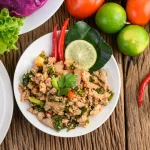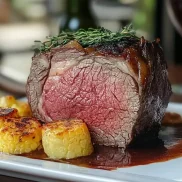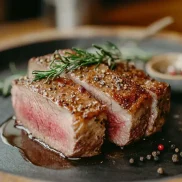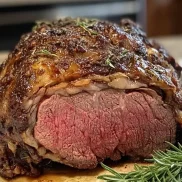Thai cuisine is a symphony of flavors and offers some of the lowest calorie options in international dining. If you’re wondering, “What’s the lowest calorie Thai food?” you’ll find plenty of healthy choices. Its delightful fusion of sweet, salty, sour, and spicy elements comes together in perfect harmony. Known for its vibrant colors, aromatic ingredients, and tantalizing taste, Thai food is also celebrated for its health benefits, providing a rich array of dishes for various dietary needs.
Table of Contents
Introduction to Thai Cuisine: Flavors and Health Aspects
Thai cuisine’s unique flavors stem from its ingenious use of fresh ingredients and traditional cooking techniques. Central to Thai cooking are key flavor profiles that make each dish distinctive: the sweetness of palm sugar, the saltiness of fish sauce, the tanginess of lime, and the heat of chili peppers. These flavors are often balanced with the umami notes of fermented pastes, creating a taste experience that is both complex and satisfying.
One of the reasons Thai food stands out is its emphasis on health. Unlike some cuisines that rely heavily on processed ingredients, Thai cooking prioritizes freshness. Commonly used vegetables like bell peppers, carrots, and broccoli provide essential vitamins and minerals, while lean proteins such as chicken, shrimp, and tofu make dishes hearty yet light. Coconut milk, a staple in many Thai recipes, is often used sparingly to enhance richness without adding excessive calories.
Another hallmark of Thai cuisine is its adaptability. Many dishes can be customized to suit dietary preferences, such as substituting traditional white rice with brown rice or quinoa for added fiber. This flexibility makes Thai food not only delicious but also versatile for those seeking healthier options.
Why Choose Thai Food for Low-Calorie Meals?
Thai food naturally suits anyone looking to enjoy flavorful meals while maintaining a healthy calorie intake. Traditional dishes often feature fresh ingredients that are both low in fat and rich in nutrients. For example, soups like Tom Yum and salads like Som Tum brim with flavor and remain light on calories, making them perfect for health-conscious diners.
Moreover, Thai cuisine’s cooking methods often involve grilling, steaming, or stir-frying, which help retain nutrients while minimizing the use of oil. Even fried dishes like Pad Thai can be made healthier by reducing oil and adding extra vegetables. The use of aromatic herbs and spices ensures that dishes remain flavorful, even when calorie-heavy ingredients are reduced.
Traditional Ingredients in Thai Dishes
Traditional Thai dishes rely on a variety of fresh and wholesome ingredients. Vegetables take center stage, with common choices such as eggplant, zucchini, bamboo shoots, and bok choy. Cooks often pair these vegetables with proteins like shrimp, chicken, and tofu to create satisfying meals. Jasmine rice and noodles, typically made from rice flour, commonly serve as the base for many dishes, though they can be swapped for lower-calorie alternatives like cauliflower rice.
Sauces and pastes are another essential component of Thai cooking. Ingredients like fish sauce, oyster sauce, and red curry paste add depth and complexity to dishes. While these can be calorie-dense, using them in moderation helps keep meals healthy without sacrificing flavor.
Herbs and Spices that Add Flavor Without Calories
Herbs and spices are the secret weapons of Thai cuisine, infusing dishes with bold flavors without adding extra calories. Lemongrass, kaffir lime leaves, and galangal are commonly used to impart a citrusy freshness, while chili peppers add heat that can be adjusted to taste. Basil, cilantro, and mint are frequently sprinkled over dishes to enhance both aroma and flavor.
Garlic, ginger, and turmeric are not only flavorful but also come with health benefits, such as anti-inflammatory and antioxidant properties. By relying on these natural ingredients, Thai cuisine delivers an incredible depth of flavor while keeping calorie counts low.
In conclusion, Thai cuisine is a treasure trove of low-calorie, nutrient-rich dishes that are as delicious as they are healthy. Its emphasis on fresh ingredients, bold flavors, and versatile cooking methods makes it an excellent choice for those aiming to enjoy guilt-free meals. Whether you’re a fan of spicy curries or refreshing salads, Thai food offers a world of possibilities to explore.
Understanding Calories in Thai Dishes
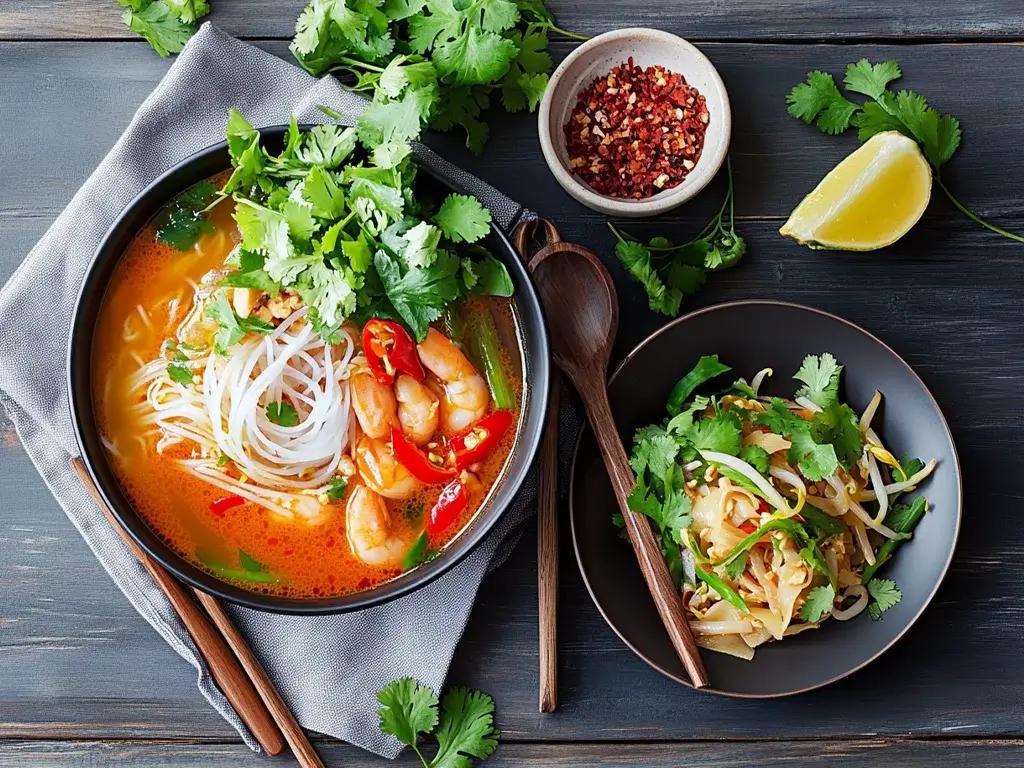
Thai food is often praised for its delicious flavors and fresh ingredients, but understanding its caloric content can help you make healthier choices. While many dishes are naturally low in calories, others can be deceptively calorie-dense due to hidden ingredients and preparation methods. Learning about the typical caloric range of popular Thai foods, identifying calorie traps, and practicing portion control are key to enjoying this cuisine without overindulging.
Typical Caloric Range in Popular Thai Foods
Thai dishes vary widely in their caloric content, depending on the ingredients and cooking methods used. Here’s an overview of the approximate caloric range for some popular options:
- Tom Yum Soup: Often considered one of the healthiest choices, a serving typically contains 90–120 calories. Packed with shrimp, mushrooms, and herbs, it’s a flavorful and low-calorie option.
- Som Tum (Green Papaya Salad): A refreshing and nutrient-rich salad, Som Tum usually has around 70–100 calories per serving, depending on the amount of dressing used.
- Pad Thai: While flavorful, a standard serving of Pad Thai can range from 300 to 600 calories due to the noodles, oil, and sweet sauces.
- Thai Green Curry: With its rich coconut milk base, a serving can have anywhere from 250 to 400 calories, depending on portion size and ingredients.
- Stir-Fried Vegetables: These dishes, especially when lightly cooked with minimal oil, can range from 100 to 200 calories per serving.
By choosing lighter options like soups and salads or customizing heavier dishes, you can better manage your calorie intake while enjoying Thai cuisine.
Hidden Calorie Traps in Sauces and Dressings
While Thai dishes may appear healthy, sauces and dressings can add unexpected calories. Here are some common calorie traps to watch out for:
- Fish Sauce and Soy Sauce: While low in calories per tablespoon, their sodium content can lead to water retention, creating the illusion of higher calorie consumption.
- Coconut Milk: A staple in curries, coconut milk is rich and flavorful but also calorie-dense, with about 450 calories per cup.
- Peanut Sauce: Often used in dishes like satay or as a salad dressing, peanut sauce can add significant calories due to its sugar and oil content.
- Sweet Chili Sauce: Frequently used as a dip or marinade, this sauce is loaded with sugar, adding unnecessary calories to otherwise healthy dishes.
Opting for smaller amounts of these condiments or seeking alternatives like fresh lime juice or chili flakes can help reduce calorie intake.
Portion Control: Keeping Calories in Check
Even with healthy ingredients, portion sizes can make or break your calorie goals. Here are practical tips to manage portions effectively:
- Serve Smaller Portions: Thai meals are often shared family-style, making it easier to sample dishes without overloading your plate.
- Balance Your Plate: Fill half your plate with vegetables, a quarter with lean protein, and the remaining quarter with rice or noodles.
- Request Customizations: When dining out, ask for less oil or sugar in your dishes and request sauces on the side.
- Be Mindful of Rice and Noodles: These staples are calorie-dense, so consider reducing the portion or swapping for alternatives like cauliflower rice.
- Eat Slowly: Thai food is rich in flavors, so take your time to savor each bite. Eating slowly can help you feel full sooner, preventing overeating.
Understanding the caloric content of Thai dishes and making small adjustments can help you enjoy this flavorful cuisine while staying on track with your health goals. By being mindful of hidden calorie traps and portion sizes, you can savor the best of Thai food without guilt.
What’s the Lowest Calorie Thai Food? Top Dishes to Choose
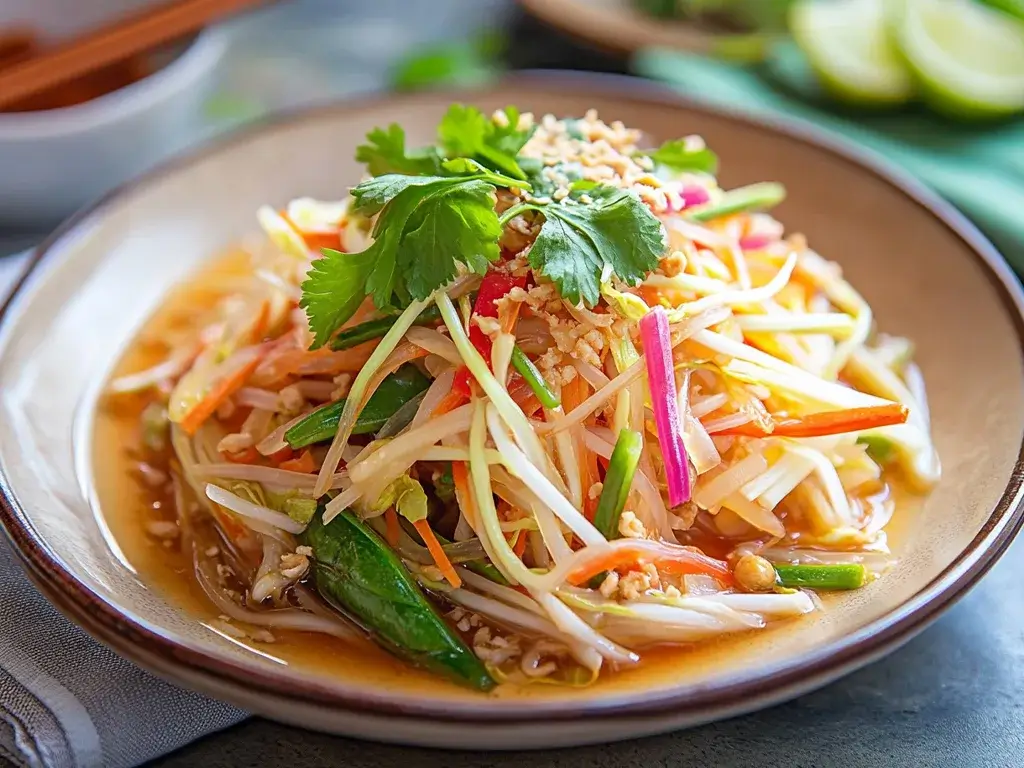
Thai cuisine is a treasure trove of low-calorie options, offering a variety of dishes that are as delicious as they are nutritious. From crisp salads to fragrant soups and satisfying stir-fries, these dishes allow you to enjoy bold flavors while keeping your calorie intake in check. Let’s explore some of the top low-calorie Thai dishes you should try and why they’re excellent choices.
Salads: Fresh and Flavorful Options
Thai salads are a vibrant and refreshing way to enjoy wholesome ingredients without packing on the calories. These dishes rely on fresh vegetables, herbs, and light dressings to create a perfect balance of flavors and textures.
- Som Tum (Green Papaya Salad): This iconic Thai salad is a nutritional powerhouse. Made with shredded green papaya, tomatoes, green beans, and peanuts, it’s tossed in a tangy dressing of lime juice, fish sauce, and chili. Som Tum is low in calories, typically ranging from 70 to 100 calories per serving. It’s rich in vitamins A and C, antioxidants, and fiber, making it both a delicious and healthy choice.
- Larb (Spicy Minced Meat Salad): This dish combines minced chicken, turkey, or tofu with fresh herbs, lime juice, and toasted rice powder. With approximately 150–180 calories per serving, Larb is a protein-packed option that’s both satisfying and light.
Soups: Light and Nourishing Choices
Thai soups are known for their aromatic broths and balanced flavors. They’re often loaded with lean proteins and vegetables, making them an excellent low-calorie choice.
- Tom Yum Soup: This popular hot-and-sour soup is a standout for its bold flavors and minimal calories. Made with shrimp, mushrooms, lemongrass, kaffir lime leaves, and chili, a bowl of Tom Yum typically contains 90–120 calories. It’s also low in fat and rich in immune-boosting properties, thanks to its herbs and spices.
- Tom Kha Gai (Coconut Chicken Soup): While slightly higher in calories due to the coconut milk, this soup can still be a healthy option if prepared with light coconut milk. A serving usually has 150–180 calories and provides a creamy, comforting meal that’s rich in flavor and nutrients.
Stir-Fried Vegetables and Lean Proteins
Stir-fried dishes are a staple of Thai cuisine, offering a quick and healthy way to enjoy a variety of vegetables and proteins.
- Pad Pak Ruam (Stir-Fried Mixed Vegetables): This simple yet flavorful dish is made with a mix of seasonal vegetables, garlic, and a light soy-based sauce. With just 100–150 calories per serving, it’s a nutrient-dense option that’s perfect as a side dish or main course.
- Gai Pad Krapow (Basil Chicken Stir-Fry): This dish features minced chicken stir-fried with garlic, chilies, and Thai basil. A serving typically contains around 200 calories and offers a satisfying mix of protein and vibrant flavors.
By choosing these low-calorie dishes, you can savor the diverse and exciting flavors of Thai cuisine while maintaining a balanced diet. With their emphasis on fresh ingredients and bold seasonings, these meals prove that eating healthy doesn’t mean sacrificing taste.
Customizing Thai Food to Reduce Calories
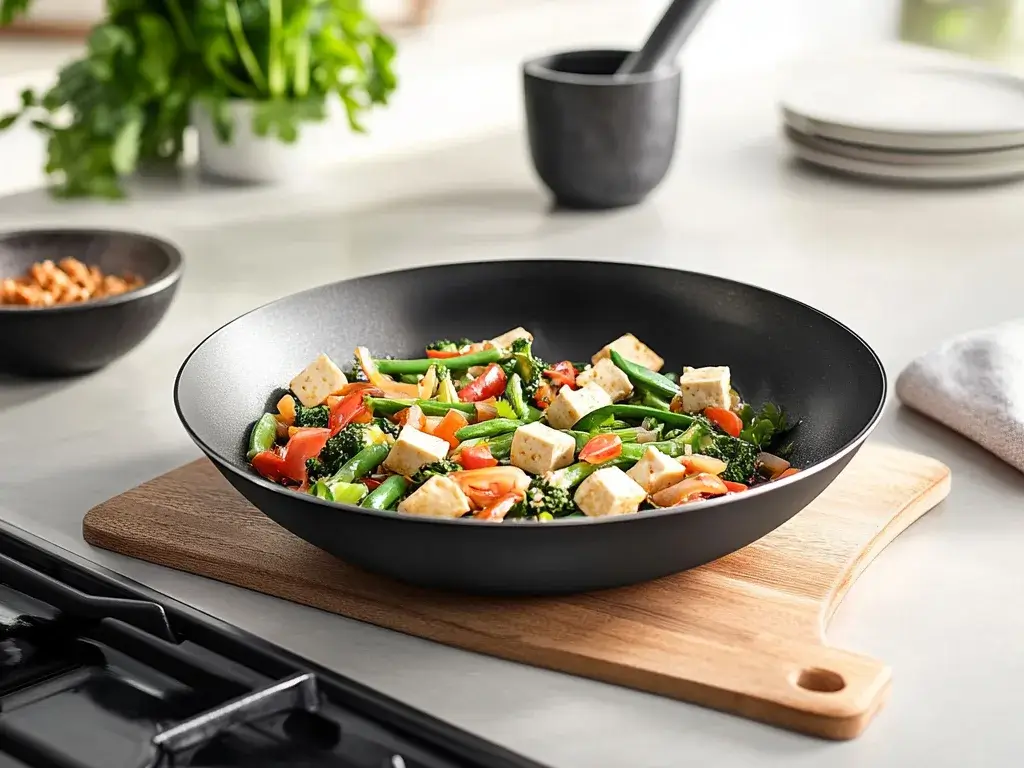
Thai cuisine offers a world of bold flavors and aromatic ingredients, but some dishes can be calorie-heavy. By making smart choices and simple adjustments, you can enjoy your favorite Thai meals while staying within your calorie goals. Whether you’re dining out or cooking at home, there are plenty of ways to make Thai food healthier without sacrificing taste.
Tips for Ordering Low-Calorie Meals at Thai Restaurants
Eating out at Thai restaurants doesn’t have to derail your health goals. Here are some tips to help you order wisely:
- Start with a Soup or Salad: Begin your meal with a light appetizer like Tom Yum Soup or Som Tum (Green Papaya Salad). These options are not only low in calories but also satisfying enough to prevent overeating later.
- Request Sauces on the Side: Many Thai dishes come with calorie-dense sauces. Asking for sauces on the side allows you to control how much you use.
- Choose Lean Proteins: Opt for dishes with chicken, shrimp, tofu, or other lean proteins instead of red meat. These choices are lighter and often lower in fat.
- Go Easy on the Rice and Noodles: White rice and noodles can add unnecessary calories. Request a smaller portion or swap for brown rice or cauliflower rice for added fiber and fewer calories.
- Avoid Fried Dishes: Choose steamed, grilled, or stir-fried options over deep-fried dishes like spring rolls or crispy fish.
- Customize Spice Levels: Spicy dishes can make you eat more slowly and feel fuller faster. Don’t hesitate to ask for extra chili or spices to amp up the flavor without adding calories.
By keeping these tips in mind, you can enjoy a delicious Thai meal that aligns with your dietary preferences.
Modifications to Common Dishes for a Healthier Twist
Making small modifications to traditional Thai dishes can significantly reduce their calorie content. Here are some popular dishes and ways to make them healthier:
- Pad Thai: Ask for less oil and extra vegetables to cut down on calories. Opt for tofu or shrimp instead of beef or pork for a leaner protein source.
- Green Curry: Request light coconut milk instead of regular and add more vegetables to increase fiber and reduce fat.
- Massaman Curry: Skip the potatoes and peanuts, which can add extra calories, and load up on lean protein and vegetables instead.
- Fried Rice: Substitute white rice with brown rice or quinoa and ask for less oil during preparation.
- Spring Rolls: Choose fresh summer rolls with a rice paper wrap instead of fried spring rolls. These are lower in calories and just as satisfying.
These small tweaks can make a big difference in the calorie count of your meal while preserving the authentic Thai flavors you love.
Cooking Thai Food at Home: Healthy Recipe Adjustments
Preparing Thai food at home gives you complete control over ingredients and portion sizes. Here are some tips for creating healthier Thai meals in your own kitchen:
- Use Healthier Oils: Replace traditional cooking oils with lighter options like avocado or olive oil, and use them sparingly.
- Boost Vegetables: Increase the vegetable content in your recipes to add volume and nutrients without extra calories.
- Reduce Sugar: Many Thai recipes call for added sugar in sauces. Use natural sweeteners like stevia or reduce the sugar altogether.
- Lighten Up Coconut Milk: Opt for light coconut milk or use a blend of coconut milk and vegetable broth to lower fat content.
- Control Portions: Serve your meals on smaller plates and avoid second helpings to keep portions in check.
With these adjustments, you can enjoy cooking and eating Thai food guilt-free. By taking charge of your meal preparation, you can ensure your dishes are both delicious and aligned with your health goals.
Frequently Asked Questions
Why is Pad Thai so high in calories?
Pad Thai is calorie-dense due to its combination of ingredients. The noodles are made from rice, a carbohydrate-heavy base, and the dish often includes generous amounts of oil, peanuts, and sometimes sugar. Additionally, the sauce, which may contain tamarind paste, fish sauce, and sugar, adds to the calorie count. To make a healthier version, you can reduce the oil, opt for fewer peanuts, and add more vegetables. Learn more
What’s the lowest calorie Thai dish?
Dishes like Tom Yum Soup and Som Tum (Green Papaya Salad) are among the lowest calorie options in Thai cuisine. They are made with fresh vegetables and lean proteins, and their flavor comes from herbs and spices rather than calorie-dense ingredients.
Can Thai food be part of a weight-loss diet?
Yes, Thai food can be part of a weight-loss diet when you choose low-calorie options and control portion sizes. Soups like Tom Yum, salads like Som Tum, and stir-fried vegetables with lean protein are great choices. Avoid dishes with heavy sauces or fried components to keep your calorie intake in check.
How can I reduce calories in Thai takeout meals?
To reduce calories in Thai takeout, request smaller portions of rice or noodles, and choose dishes with steamed, grilled, or stir-fried ingredients instead of fried options. Asking for sauces on the side and opting for light soups or salads can also help you cut calories.
Is Thai food generally healthier than other cuisines?
Thai food is often healthier due to its focus on fresh ingredients, herbs, and spices. Many dishes are low in fat and high in nutrients. However, some dishes can be calorie-dense due to coconut milk, sugar, and fried elements, so it’s essential to choose wisely.
Are Thai curries high in calories?
Thai curries can be high in calories due to their coconut milk base. Green curry, red curry, and Massaman curry, for instance, contain a significant amount of fat and calories from coconut milk. To reduce the calorie content, choose light coconut milk or dilute it with broth and increase the vegetable content.
What are the best substitutions for rice and noodles in Thai food?
Great substitutions for rice and noodles in Thai dishes include cauliflower rice, zucchini noodles, or shirataki noodles. These alternatives are low in calories and carbs, making them ideal for those looking to cut back on calories.
Conclusion
Thai cuisine offers a rich variety of flavors, textures, and aromas that make it beloved worldwide. By understanding the calorie content of dishes and making thoughtful choices, you can enjoy this vibrant cuisine while maintaining your health goals. Savor Tom Yum Soup, delight in the crunch of Som Tum, or try healthier recipes at home—Thai food proves that eating well can be both delicious and satisfying.
Adding Thai dishes to a balanced diet is easy when you focus on fresh ingredients, lean proteins, and controlled portions. Whether dining out or cooking at home, the versatility of Thai cuisine ensures there’s something for everyone. With these tips, you can enjoy Thai food guilt-free and explore its incredible diversity. Ready to begin? Thai cuisine welcomes you with tantalizing flavors!

